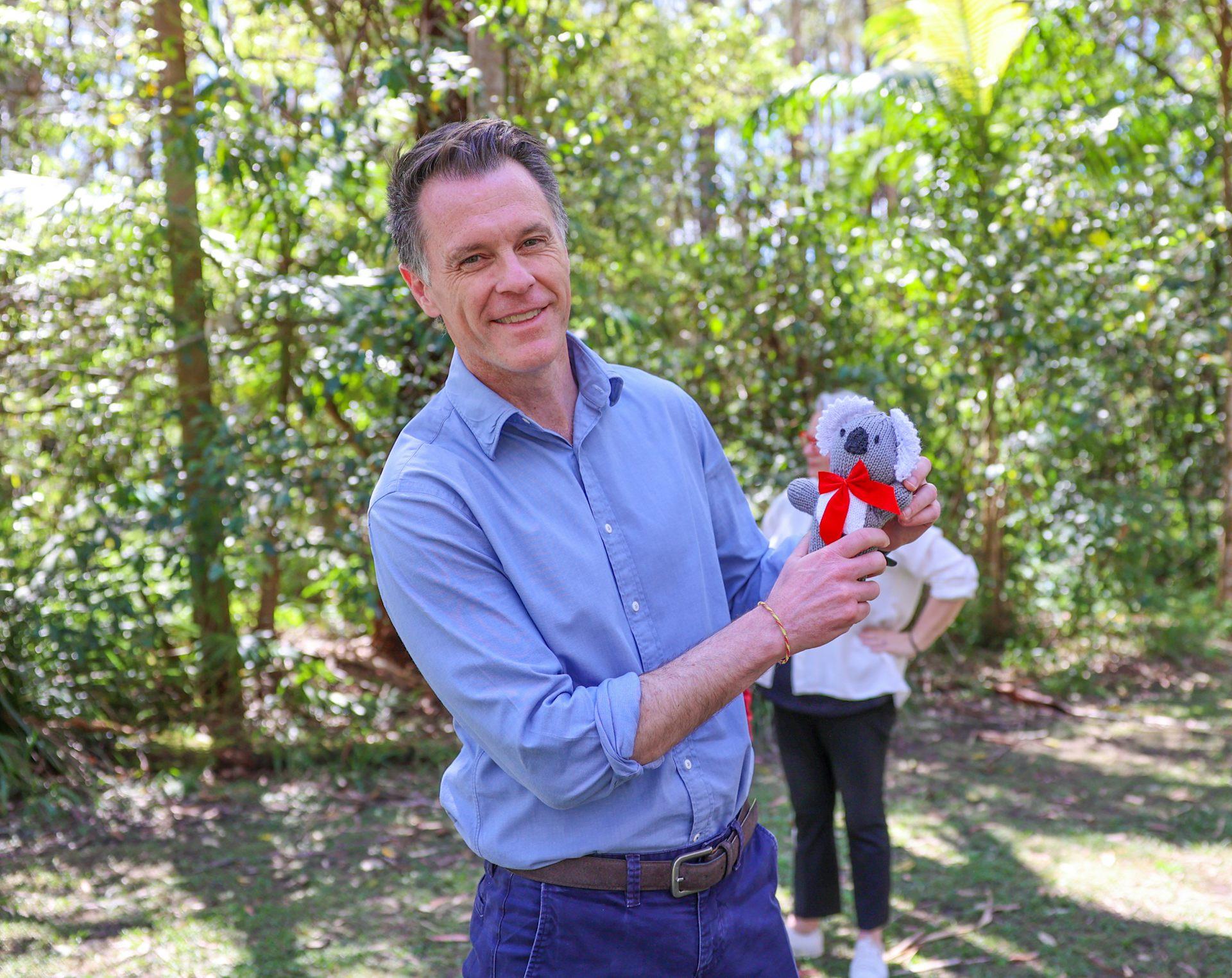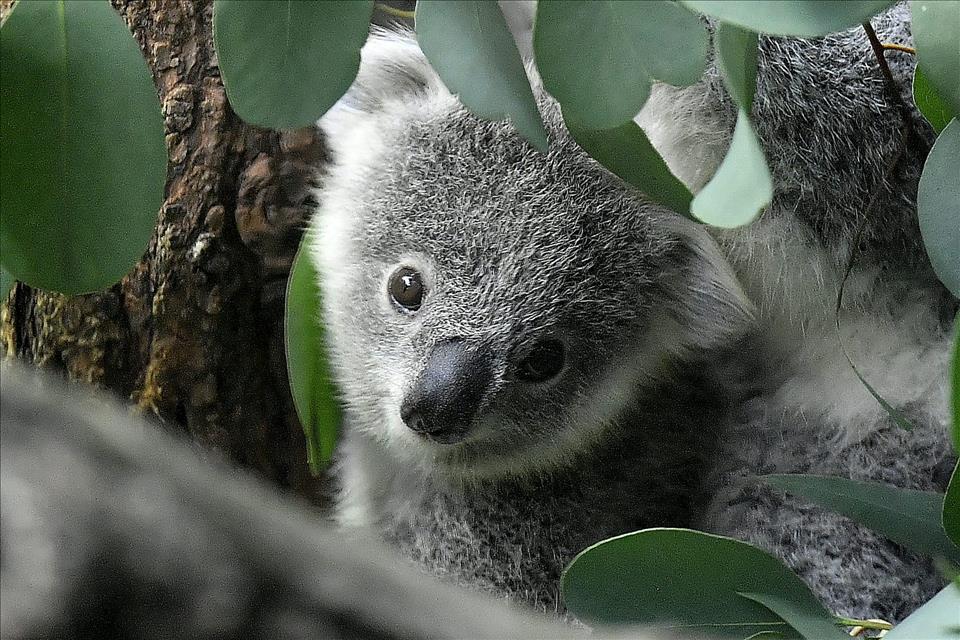Koalas Are Running Out Of Time. Will A $140 Million National Park Save Them?
The reserve will combine existing national parks with newly protected state forest areas, to create 476,000 hectares of protected koala habitat. Logging will be phased out in certain areas, and a transition plan enacted for affected workers and communities.
Conservationists have welcomed the move as a win for biodiversity. However, some industry groups have raised concerns about the economic impact on the region's timber operations.
The announcement, which follows a long campaign by koala advocates , shows the NSW government recognises the importance of protecting biodiversity. But announcing the national park is just the first step in saving this iconic species.

NSW Premier Chris Minns, announcing the Great Koala National Park on Sunday. David Wigley/AAP A worrying decline
Koalas are notoriously hard to count, because they are widely distributed and difficult to spot.
In 2016, a panel of 15 koala experts estimated a decline in koala populations of 24% over the past three generations and the next three generations.
Habitat loss and fragmentation is the number one threat to koalas. Others include climate change, bushfires, disease, vehicle strikes and dog attacks.
The decline gave momentum to calls by conservationists and scientists for the establishment of a Great Koala National Park, taking in important koala habitat on the NSW Mid North Coast.
In 2023, the NSW government pledged A$80 million to create the park. The announcement on Sunday increased the pledge to $140 million.
Announcing the development, NSW Premier Chris Minns said it was“unthinkable” that koalas were at risk of extinction in that state.
The government also proposed the park's boundary and announced a temporary moratorium on timber harvesting within it – as well as a support package for logging workers, industries and communities.
However, the logging industry remains opposed to the plan .
Vehicle strike is a big threat to koalas. Darren England/AAP Not the end of the story
The creation of the park is a welcome move. It will protect not just koalas but many other native species, large and small.
But on its own, it's not enough to save the NSW koala population. Even within the national park, threats to koalas will remain.
For example, research shows climate change – and associated heat and less rainfall – threatens the trees koalas use for food and shelter. Climate extremes also physically stress koalas. This and other combined stresses can make koalas more prone to disease.
Bushfires, and inappropriate fire management , can degrade koala habitat and injure or kill them outright.
The NSW government says logging must immediately cease in areas to be brought into the park's boundary. However, logging pressures can remain , even after national parks are declared. Forestry activities must cease completely, and forever, if the park is to truly protect koalas.
What's more, recreational activities, if allowed in the national park, may negatively impact koalas. For example, cutting tracks or building tourist facilities may fragment koala habitat and disturb shy wildlife .
These threats must be managed to ensure the Great Koala National Park achieves its aims.
National parks don't protect koalas from threats such as bushfires. DAVID MARIUZ/AAP Prioritising nature
Of course, the creation of a new national park does not help koalas outside the park's boundaries. Koala populations are under threat across their range in NSW, Queensland and the ACT.
That's why the national recovery plan for the koala should be implemented urgently and in full. It includes increasing the area of protected koala habitat, restoring degraded habitat, and actively conserving populations. It also includes ending habitat destruction by embedding koala protections in land-use planning.
As I have previously written, koala protection areas should be replicated throughout the NSW and Queensland hinterlands. My research shows the future climate will remain suitable for koalas in those areas.
And logging must be curbed elsewhere in Australia, such as in Tasmania , where it jeopardises threatened species and ancient forests.
The Great National Koala Park promises be a sanctuary for koalas and other wildlife, and a special place for passive, nature-based recreation and tourism. Yes, the plan has detractors. But saving Australia's koalas means prioritising nature's needs over that of people.
And we must not forget: the national park is just one step on a long road to preventing koala extinctions.

Legal Disclaimer:
MENAFN provides the
information “as is” without warranty of any kind. We do not accept
any responsibility or liability for the accuracy, content, images,
videos, licenses, completeness, legality, or reliability of the information
contained in this article. If you have any complaints or copyright
issues related to this article, kindly contact the provider above.
Most popular stories
Market Research

- Cregis Releases 2025 Cryptocurrency Wallet Analysis
- Origin Summit Announces Wave 3: Animation Powerhouse Maggie Kang To Join Programming Lineup
- Falcon Finance Unveils $FF Governance Token In Updated Whitepaper
- Hola Prime Expands Its Platform Ecosystem With Next-Gen Tradelocker
- LYS Labs Moves Beyond Data And Aims To Become The Operating System For Automated Global Finance
- Tradesta Becomes The First Perpetuals Exchange To Launch Equities On Avalanche






















Comments
No comment